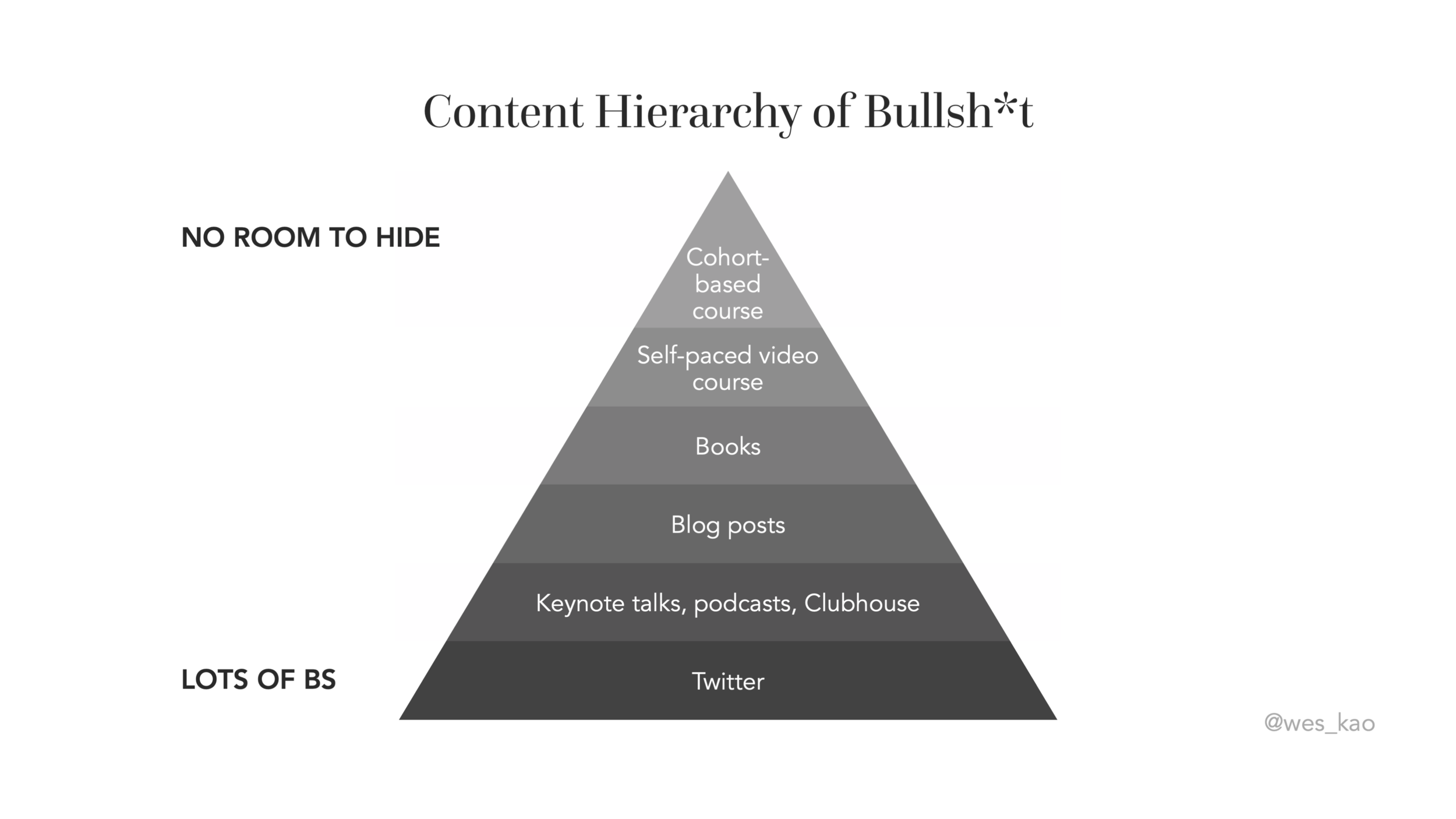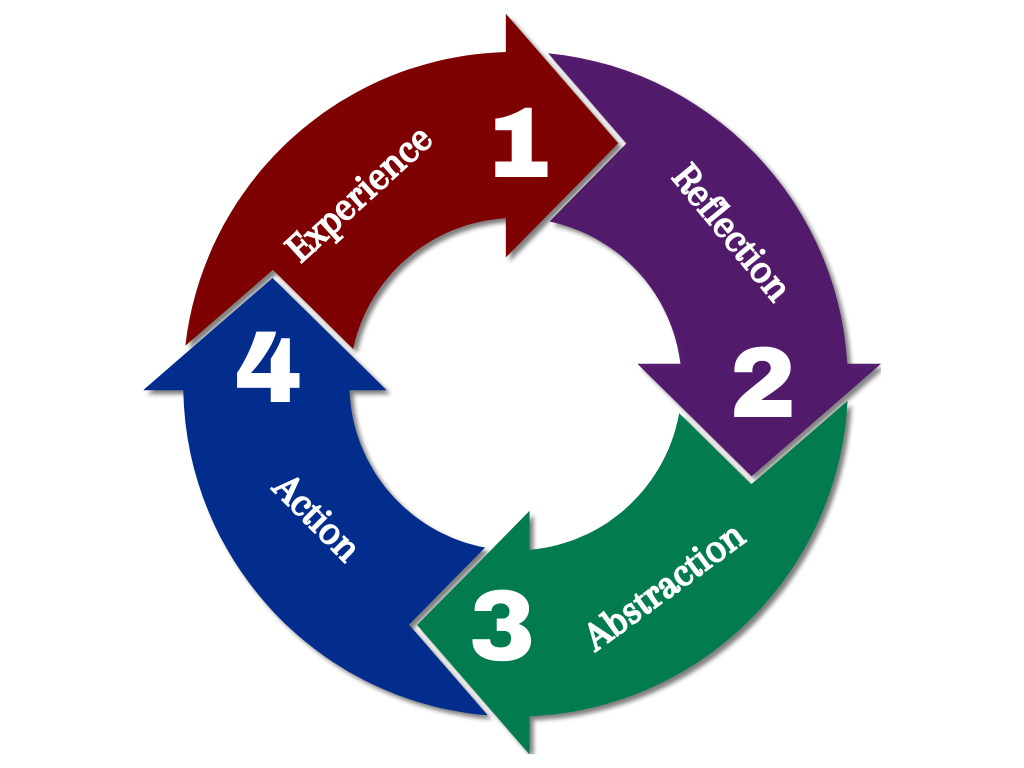MOOCs once promised to make top-tier education accessible to billions of people, but the results just weren’t there: abysmal completion rates and underwhelming outcomes. The fourth wave of online education is here: smaller, higher-touch, intensive experiences, which have been branded as cohort-based courses. And my prediction is that 2023 is the year that cohort-based courses will break out to become the next dominant format in edtech.
“Online learning” has long been synonymous with MOOCs: pre-recorded video courses popularized by Coursera, Udemy, and Skillshare. Videos by industry professionals or academics, with assignments and quizzes sprinkled throughout, are affordable or sometimes free. But while MOOCs promised to give everyone an Ivy-league education, the results have fallen far short. The format often doesn’t allow for any human interaction besides message boards. Without the structure and accountability of live classes, most students fall behind and never finish. An MIT study said that the average completion rate of MOOCs could be 10% or even 5%. While MOOCs have made the content more accessible, the outcomes just aren’t there.
Wes Kao wants to change that.
Having been in the online education sector since 2014, co-founder of the altMBA and previously leading special projects for Seth Godin, Kao believes that interaction is the secret to—and the future of—effective online learning. Now she’s co-founder of Maven, the first platform that helps creators build cohort-based courses, she’s certainly able to validate her observations.
“The thing that we’re really seeing in the last couple of years is the trend toward more interactive live learning: taking the best parts of online learning—the scale, accessibility, and affordability—combined with the best part of in-person learning, when you’re in the same room as someone, breathing the same air, riffing with each other, debating, discussing, reviewing each other’s work, tearing down some stuff and rewriting it together,” says Kao.
“That kind of collaboration and learning is something that we’re now able to do. The technology and appetite are there.”
“There’s a 75% on average completion rate for cohort courses,” she shares—a huge leap from the dismal completion rates of MOOCs. You’d think that massive, self-paced, and cheap courses would get people motivated to study, but as it turns out, a structured learning process that’s a bit more expensive and effort-intensive is actually more effective.
Want to build your own cohort-based online course? Here’s how you can get started.
Course building
Kao builds courses using what she fondly calls “the content hierarchy of Bullsh*t.” This framework keeps instructors accountable and lets them deliver content that’s really rigorous and provides learners with the value they paid for.
At the bottom of the pyramid, you’ll find tweets, podcasts, keynotes: fluffy, BS-filled knowledge bombs that don’t leave much room for pushback or objections. You don’t exactly need specialized knowledge to execute these—an above-average writer with a good internet connection should be able to churn these out.
As you move up the pyramid, there’s less room for BS. Here’s where you’ll find papers, books, and most online courses. At this level, you’re speaking to people with some knowledge in the field, so you need to know your stuff. Your content needs to be worth your learners’ time, effort, and attention.
At the very top of the hierarchy lies cohort-based courses. Here, there’s absolutely no room for BS. Unlike MOOCs where students can’t ask questions or object to discussions, you need to back up what you’re saying in a cohort-based course or you’ll lose control of the class.
Additionally, the nature of cohort-based courses means they’re more expensive to provision, resulting in higher enrollment fees. When students are paying over $2000 for a course, they expect a lot more than when they’re paying $19.95 on Udemy.
Let’s explore what sets cohort-based courses apart from MOOCs.
Learning through Doing Surpasses Learning through Watching
“The way that people traditionally think they learn is through experience, but I don’t think we learn from experience because we’ve all worked with somebody who’s had 20 years of experience, but it’s the same year repeated over and over and over again,” says The Knowledge Project podcast’s Shane Parrish, who talked about the future of online education with Kao at Demand Curve’s Growth Summit in October.
“Real learning comes from when you take an experience—when there’s a conversation, when you’re reading a book, when you’re doing something that causes an experience—and you reflect on it.”
Without reflection, there’s no learning. Ask yourself what you could have done better. Look for the edge cases, push the boundaries, try to poke holes in the argument.
“Once you reflect on something, you create an abstraction: ‘What should I do next time I’m in this situation?” All of these reflections are embedded in an abstraction, which then creates an action. So we have the experience > reflection > abstraction > action loop, and it’s a neverending cycle.
A cohort-based course lets you get the information you need and put it into action immediately, and you get the opportunity to reflect on your new knowledge right away. There’s no distance between learning and reflecting, which means improvement will be a lot faster.
You can see this loop in action in Shaan Puri’s Power Writing course on Maven. Shaan would give his students two minutes to draft headlines, and at the end of the two-minute mark, the class would workshop their writing. Workshopping allows you to learn from others’ reflections and helps cement knowledge—and it’s something you certainly won’t get in a MOOC such as Coursera’s copywriting course.
“It’s a tight feedback loop,” says Kao. “It’s not just passively consuming information, but actually putting what you’ve learned into practice. That’s how you refine that knowledge and learn.”
Live Sessions Sharpen Understanding
Live sessions are what sets cohort-based courses apart from other types of online learning programs. To make a cohort-based class successful, you need to do activities that you can only do live.
“If you’re just monologuing, there’s no reason to be live,” says Kao. “We let people email us their questions, and we address their questions in the next session. This gives them the opportunity to process what they’ve learned. Providing options for different learning types allow for the learning experience to cut through.”
Interaction is crucial, whether between the instructor and the learners or between groups of learners. Incorporate icebreakers, one-on-one sessions, small group and pair activities, and breakout rooms in your program. This encourages the exchange of ideas in a way that’s more comfortable for learners, who could be intimidated by speaking in front of hundreds.
“There’s a saying, ‘iron sharpens iron’—so let people sharpen each other.”
Cohort-Based Courses Better-Prepare Us For a Specialized, Complex World
The pandemic proved that we can do our intensive, difficult jobs remotely, which pulled forward the idea that intensive, difficult training can be provided remotely as well. The infrastructure to offer interaction and real-time feedback has been proven to exist remotely, enabling cohort-based courses to scale and making it one of the most promising opportunities for online skills training since the MOOC ten years ago.
The economy, and our individual jobs, are also becoming increasingly specialized and complex, which lends itself less and less to mass-produced liberal arts degrees and increasingly to small-batch, niche training, and leveling-up throughout one’s career.
Our careers are getting increasingly complex. Today a marketer might need to have a deep understanding of the market: The customer they serve, the landscape of other products, industry trends, the complements and substitutes that a customer might be using—and how all these things fit together. They also need to know their craft—a constellation of concepts, tools, technologies, and best practices that enable to them to get the best marketing results.
I can’t think of anything I learned from my four years at Berkeley that prepared me for that (besides how to drink).
Our careers are also getting more specialized. The skills and experience required to create a great TV campaign are entirely different from the skills and experience required to create a killer Paid Search campaign—and a liberal arts degree prepared me for neither of them. I’m an excellent marketer, obsessed with honing my craft, and willing to work long hours. But my first TV commercial was a disaster and potentially a big part of why I was fired from that job.
Now, if there was a short just-in-time course on creating and launching TV campaigns, I could have enrolled in that and could have spent nights and weekends studying as I was doing that project. That’s the promise of cohort-based courses.
In the same way that the demand for music, movies, and TV has shifted from the fat head into the long tail, the demand for courses has as well. Cohort-based courses are the final recipe change that will unlock online learning with strong completion rates and strong outcomes, at scale, for our society.


